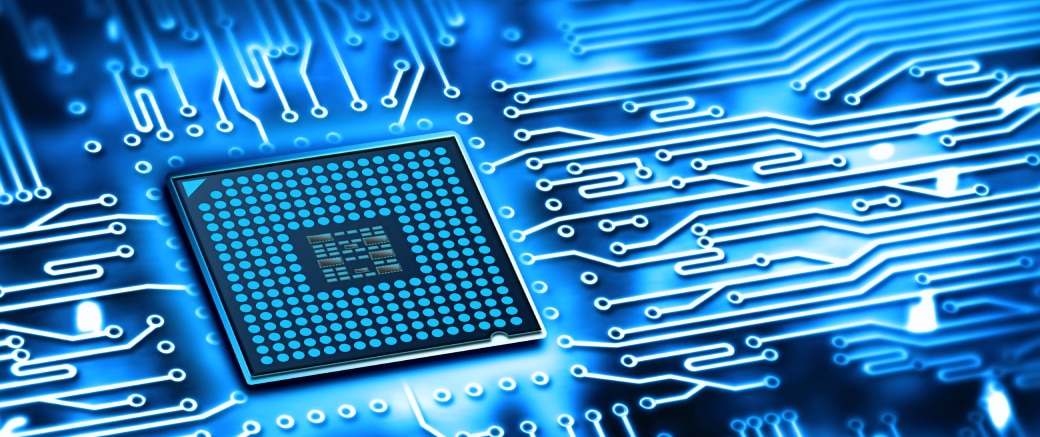Shimadzu's Solutions to Scientific Testing in Electrical & Electronics (E&E) Market

Electronic devices and semiconductor technologies support a variety of industries and help us live comfortable lives. Analytical techniques are playing critical roles in various areas of electronics industries, from analytical evaluation to combinatorial use of inorganic and organic analytical methods.
Shimadzu provides a complete solution for failure/defect analysis and quality control for electronic components, mobile devices, semiconductors, lithium-ion batteries, fuel cells, and photovoltaic cells. In addition, we offer solutions from screening to accurate quantification of substances in order to comply with regulations and directives such as RoHS, ELV, and REACH.
Herein, learn about Shimadzu’s analytical and measuring instruments used in electrical/electronic fields. This includes:
- Observation and Analysis / Evaluation
- Evaluation of Optical Properties
- Evaluation of Additives and Hazardous Substances
- Evaluation of Properties
- Evaluation of Particle Size Distribution
- Environmental Measurement
- Evaluation of Mechanical Properties
- Evaluation of Mass
Don’t miss out the opportunity to learn about Shimadzu’s comprehensive solutions.
Into the Latest Trend of 5G: Unleashing the Potential of 5G With Shimadzu’s EPMA
Fifth-generation mobile communication systems (5G) are wireless communication systems for realizing high speed and large capacity, massive connectivity, high reliability, and low latency.
However, signal deterioration due to dielectric loss is a problem in these high frequency bands. As a solution to this problem, fluoropolymers (e.g. PTFE) and liquid crystal polymers (LCP) have attracted attention as insulating materials for printed circuit boards (PCBs).
With the use of Electron Probe Microanalyzer (EPMA), it enables the observation and analysis of the layer interface and layer surfaces of multilayer printed circuit boards for 5G communications and other high frequency applications. It can also be used in research and development of electronic substrates, reliability evaluation, and failure analysis.
Analysis of Printed Circuit Boards (PCB) for 5G Communication Equipment
EPMA-8050G: The Ultimate Advance in Analysis Performance
The EPMA-8050G is an analytical instrument used for non-destructive elemental analysis of micro-sized volumes on the surface of materials. This instrument is equipped with a cutting-edge FE electron optical system, which provides unprecedented spatial resolution under all beam current conditions, from SEM observation conditions up to 1 μA order. Integration with high performance X-ray spectrometers that Shimadzu has fostered through the company's traditions achieves the ultimate advance in analysis performance.
Learn how you can leverage EPMA as a precise & accurate technique for surface characterization in our on-demand Digital Classrooms session.
EPMA: A Revolutionary Approach to Micro-Analysis Webinar
EPMA-8050G: Key Analytical Features
- Unprecedented Spatial Resolution
The secondary-electron image resolution of 3 nm (30 kV accelerating voltage) is the highest level for an EPMA system. This is the ultimate secondary-electron image resolution under analysis conditions.
- Large Beam Current Enabling Ultra High Sensitivity Analysis
This system achieves a maximum beam current of 3.0 μA (30 kV accelerating voltage). There is no need to replace the objective aperture across the entire beam current range.
- Up to Five High Performance 4-Inch X-Ray Spectrometers Can be Mounted
The 52.5° X-ray take-off angle is in a class by itself. The 4-inch Rowland circle radius provides both high sensitivity and high resolution. The system can accommodate up to five X-ray spectrometers of the same type.
- Simple and Easy-to-Understand Operations for All Analyses
Advanced operability ensures that all operations can be performed with just a mouse. The user interface is designed to be easy to understand. Easy mode analysis automates all processes up to generating reports.
- Advanced Technology Enabling Ultra High Sensitivity Analyses of Minute Areas
A high output Schottky emitter with a larger tip diameter than ordinarily used in SEMs is adopted for the FE electron gun. A stable electron beam is obtained that while bright has the large current indispensable for high sensitivity analysis.
Discover more about EPMA-8050G’s state-of-the-art technologies and its corresponding features and functionalities.
More Analysis Solutions in the E&E Sector
Apart from printed circuit boards, Shimadzu also offers analysis solutions to electronic components, including ICs, sensors, and other components. These are made of various materials such as resin and metal, and various analytical instruments are used depending on the material. In addition, X-ray inspection equipment is used to identify defects in electronic components.
- Printed Circuit Board
Printed circuit boards are used in all types of electrical products and are equipped with a variety of electronic components and ICs to enable the products to function effectively. In order to improve the reliability of printed circuit boards, solder joints need to be inspected and any foreign substances that cause problems need to be analyzed.
- IC [Integrated Circuit]
An IC is an assembly of electronic components such as transistors, diodes, resistors, and capacitors encapsulated in a single unit. This section introduces various analytical instruments used in IC development.
- Solder
Solder is used to secure electronic components to printed circuit boards. Lead-free solder has been used since 2005 to protect the environment. This section introduces observation and analysis examples of lead-free solder bonding.
- Sensor
Sensors are devices that convert physical and chemical phenomena into electrical signals and data for output. In recent years, sensors have been used not only in industrial fields, but also in aircraft and automobiles, as well as in digital devices such as home appliances, computers, and smartphones.
- LED
An LED is a diode that emits light and is installed in various electrical products. During the development of LEDs, emission spectra are measured using a UV-visible spectrophotometer (UV) or a spectrofluorophotometer (RF).
For more, visit our application solutions targeting each electronic component.
Conclusion
The EPMA-8050G stands out with its ability to achieve the world’s highest spatial resolution performance during high-current irradiation. It also enables ultra-high-sensitivity analysis with irradiation at high current levels up to 3 µA, making it useful in scientific testing for applications such as electronic testing.
For more, get access to useful resources at our Resource Library and Digital Classrooms. Stay connected with us here for the latest updates!